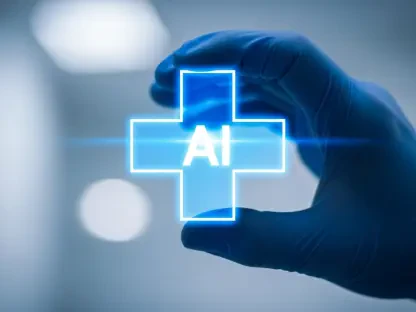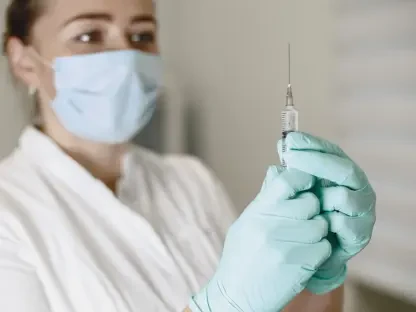In this engaging interview, we have Faisal Zain, a renowned expert in medical technology. Faisal will share his insights on how advancements in technology are reshaping the healthcare landscape, echoing the personalized care once captured in Sir Luke Fildes’ iconic painting “The Doctor.” Faisal draws from his extensive experience in medical device manufacturing to discuss the transformation from traditional healthcare models to cutting-edge digital solutions.
Can you explain how Sir Luke Fildes’ painting “The Doctor” represents the historical approach to personalized healthcare?
Fildes’ painting captures an era when healthcare was intensely personal and centered around the patient’s entire life context. Doctors were not just treating a condition; they were familiar with the patient’s family, environment, and social circumstances. This personal touch fostered trust and understanding, which were crucial in delivering effective care. The painting is a beautiful encapsulation of that time when medicine was not just science, but also an art of empathy and observation.
How did the healthcare model change after World War I, and what are some reasons for those changes?
After World War I, the demand for healthcare surged due to a dramatic increase in patient numbers, leading to the establishment of large hospitals. This centralized model brought innovations and efficiency, but it also created a gap in personalized care. Doctors began to specialize in narrower fields, and this specialization, while beneficial in many ways, often led to a more fragmented patient experience. The focus shifted towards a system that emphasized efficiency over individual attention.
What challenges does the current healthcare system face in providing personalized attention to patients?
Today, one of the biggest challenges is the sheer volume of patients compared to available healthcare professionals. The demand far exceeds the supply, as we see growing patient loads. This imbalance makes it difficult to provide the kind of attention patients once received. Moreover, administrative tasks continue to consume substantial amounts of a provider’s time, further reducing the opportunity for personalized care.
How is generative AI transforming the healthcare sector today?
Generative AI is pivotal in transforming healthcare by automating routine tasks, such as documentation and data entry, allowing healthcare professionals to dedicate more time to patient interaction. These AI tools can handle large volumes of information quickly and accurately, which helps streamline operations and frees up time for more personal aspects of care. The integration of AI is slowly bringing back the focus on individualized patient care through innovative solutions.
In what ways are chatbots and virtual assistants contributing to personalized patient care?
Chatbots and virtual assistants are revolutionizing patient interaction by providing instant responses to queries, thus relieving some of the burdens from healthcare providers. They are designed to engage patients regularly, reminding them to take medications or monitor their symptoms, which adds a personal touch. These tools also gather valuable data on patient behavior and preferences, enabling more customized care plans and feedback for health practitioners.
How can real-time data improve the timeliness and personalization of healthcare solutions?
Real-time data collection allows for immediate feedback and adjustments to patient care. It helps in monitoring vital signs, medication adherence, and lifestyle factors, offering a comprehensive view of a patient’s health status. This enables healthcare providers to deliver timely interventions that are precisely tailored to individual needs, improving outcomes and patient satisfaction.
What role does predictive analytics play in tailoring healthcare to individual patients?
Predictive analytics leverage data to anticipate healthcare needs before they become critical. By analyzing trends in a patient’s health data, predictive tools can identify potential risks and suggest proactive measures. This allows providers to address issues early, personalize treatment plans, and focus on preventive care, which is not only cost-effective but also enhances the quality of life for patients.
How can technology address healthcare inequality as mentioned in Dr. Martin Luther King’s quote?
Technology can significantly bridge the gap in healthcare inequality by improving access through digital solutions like telemedicine and mobile health apps. These tools can deliver care to underserved communities at lower costs and with greater convenience, making healthcare more equitable. Educational campaigns powered by technology also raise awareness and promote the use of these digital tools in marginalized areas.
What are some examples of how healthcare providers are integrating social care into digital health platforms?
Healthcare providers are increasingly embedding social care elements into their digital platforms. For instance, applications now include resources for housing, transportation, and nutritional support, facilitating a more comprehensive approach to patient wellness. By removing these social barriers, patients are more likely to adhere to medical advice and manage their health conditions effectively.
How is technology improving access to mental health services?
Technology significantly enhances accessibility to mental health care by offering remote counseling services, mobile therapy apps, and online support communities. These resources provide patients the flexibility to seek help without inhibiting factors like stigma or geographical constraints. Early intervention through digital mental health platforms helps patients receive timely support and improves overall mental health outcomes.
In what ways are healthcare providers enhancing the patient experience to make it more seamless and frictionless?
Providers are adopting digital innovations to offer patients a streamlined experience similar to online shopping or banking. Tools such as integrated apps for booking appointments, accessing lab results, and communicating with care teams ensure patients navigate their healthcare journey more efficiently. This reduces redundancy in communication and creates a consistent, user-friendly patient experience.
What measures are being taken to ensure patient data privacy and consent in the digital age?
To safeguard patient data, healthcare companies are rigorously implementing compliance with privacy regulations and transparent communication about data use. Ensuring patients have control over their data through consent features is paramount. Providers are also investing in cybersecurity measures to protect sensitive information from unauthorized access.
How is AI contributing to innovative solutions for healthcare challenges that were not possible a few years ago?
AI is unlocking unprecedented possibilities in healthcare by enabling complex data analysis that enhances diagnosis, treatment personalization, and predictive care. AI-driven innovations offer solutions that traditional methods couldn’t provide, such as individualized treatment protocols and advanced diagnostic imaging, thereby revolutionizing how care is delivered.
Could you provide insights into how a hyper-personalized approach to care may become standard practice in the future?
Hyper-personalized care will likely become standard as technology continuously evolves to provide tailored healthcare experiences. With AI and real-time analytics, providers can craft specific interventions based solely on an individual’s health profile and lifestyle. This personalization will not only optimize health outcomes but also engage patients more deeply in managing their own health.
Can you discuss any potential obstacles healthcare providers face when adopting these technological advancements?
Adopting new technologies involves significant financial investment and a change in organizational culture. Implementation is often met with resistance due to the complexities involved in integration and the need for extensive training. Moreover, ensuring data interoperability across different systems can pose a challenge, requiring robust solutions to facilitate seamless data exchange.
How do you see the role of a healthcare technology executive evolving with these changes in technology?
The role will evolve from focusing solely on operational technology management to strategic implementation and innovation leadership. Executives will need to bridge technological advances with clinical goals, ensuring these innovations achieve the desired outcomes in patient care while maintaining cost-effectiveness and fostering an adaptable organizational culture.









